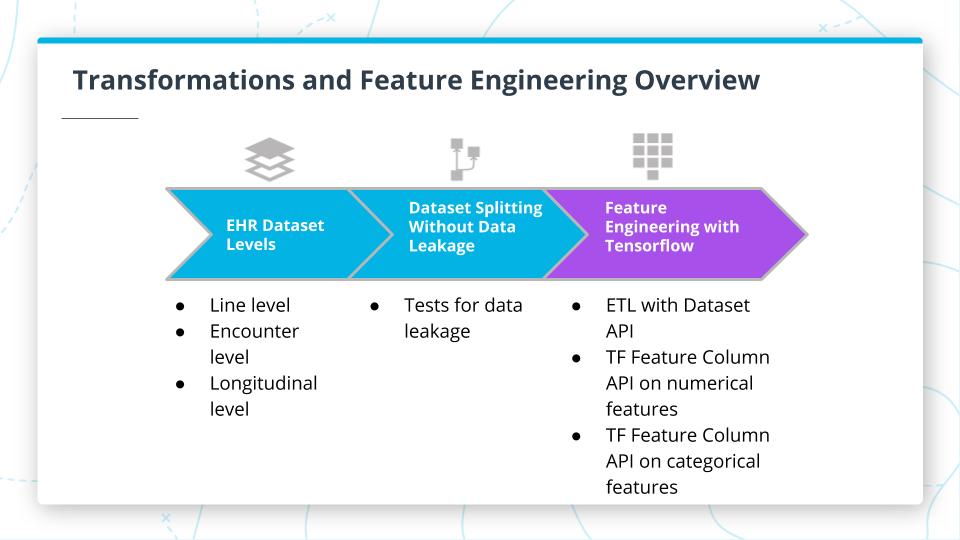19. Transformations and Feature Engineering Recap
Transformations and Feature Engineering Recap
ND320 AIHCND C01 L03 A16 Lesson Overview

Transformations and Feature Engineering Recap
Fantastic Job! You are 75% of the way through this course!
In this lesson you learned:
- to identify and conduct tests to determine the correct EHR dataset level. You learned to differentiate between the line, encounter, and longitudinal levels. This skill will ensure that as we build our models, you are using the right data level.
- conducted some basic tests while splitting data like a lumberjack preventing Data leakage which can be a major issue in EHR datasets.
- engineered features with Tensorflow. In this part, you performed ETL with the Dataset API. You also transformed datasets using the TF Feature Column API for both numerical and categorical features.
You can now use the Feature Column API for transforming datasets at scale and building some unique feature types.
Amazing job! The next lesson will be even more fun as we start building our machine learning models!
Lesson Key Terms
| Key Term | Definition |
|---|---|
| Line Level | A denormalized representation of all the things that might happen in a medical visit or encounter. |
| Encounter Level | Also known as the visit level, which is the aggregated information from the previously mentioned line level for one encounter. This information can be collapsed into a single row or arrays. |
| Longitudinal Level: | Also known as the patient level view. This level aggregates the patient history and can show how the culmination of visits/encounter lead to some clinical impact. |
| Encounter | “An interaction between a patient and healthcare provider(s) for the purpose of providing healthcare service(s) or assessing the health status of a patient.” |